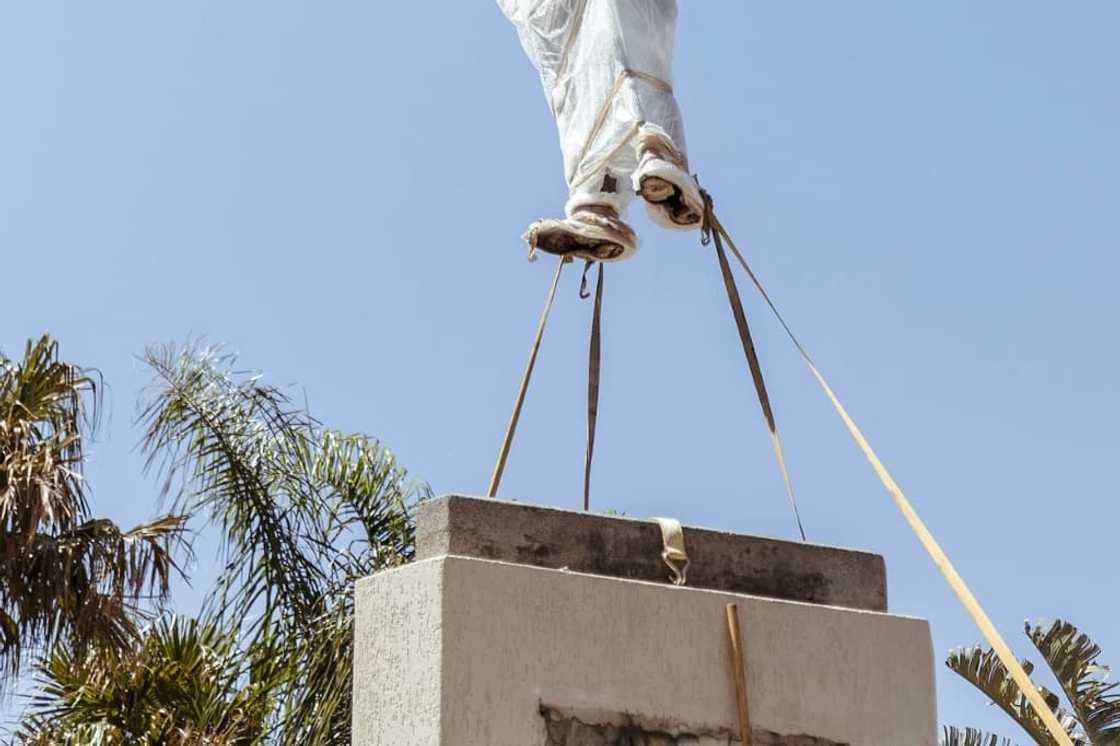Namibia pulls down statue of German coloniser

Source: AFP
PAY ATTENTION: Never miss breaking news – join Briefly News' Telegram channel!
Authorities in Namibia's capital Windhoek on Wednesday took down and relocated a statue of a controversial German colonial officer following pressure from local activists.
The monument commemorated Curt von Francois, a German army commissioner who has been credited with founding Windhoek -- something local campaigners and historians dispute.
The statue, which stood on a high pedestal outside municipal buildings, depicted von Francois in a military uniform with a moustache, a large hat, and holding a sword.
"This moment is a recollection of dignity, our city has been white-washed," Hildegard Titus, an activist with the A Curt Farewell movement that pushed for the statue's removal, told AFP.
"There is an emotional tie to the statue being taken down but it also has to do with historical accuracy".
The city council said the statue, which A Curt Farewell described as "a reminder of genocide", will now be kept at the Windhoek City Museum.
PAY ATTENTION: Follow Briefly News on Twitter and never miss the hottest topics! Find us at @brieflyza!
There it will be displayed with an explanation of the historical context, said Aaron Nambadi, a curator at the museum.
"We as historians and curators were involved in this project to correct the false narrative that von Francois was the founder of the city," Nambadi told AFP.
Germany colonised Namibia from 1884 to 1915.

Source: AFP
Between 1904 and 1908, German settlers killed tens of thousands of indigenous Herero and Nama people between in massacres historians have called the 20th century's first genocide.
Germany acknowledged the genocide last year after lengthy, bitter negotiations.
It promised more than one billion euros ($1 billion) in financial support to descendants of the victims, whom many Namibians argue were not sufficiently involved in the negotiations.
Last month Namibia asked to renegotiate the terms of the agreement.
The removal of von Francois' statue comes two years after the statue of Cecil Rhodes, a British colonialist, was beheaded by activists at the University of Cape Town in neighbouring South Africa during protests sparked by the death of George Floyd.
PAY ATTENTION: Сheck out news that is picked exactly for YOU ➡️ find the “Recommended for you” block on the home page and enjoy!
Source: AFP


